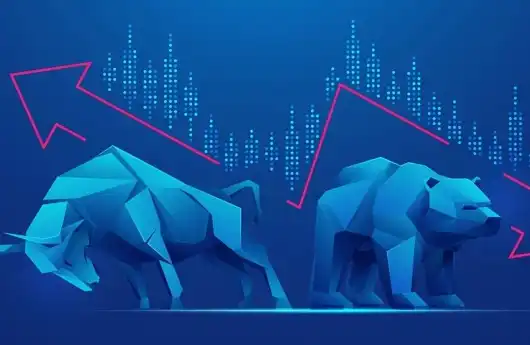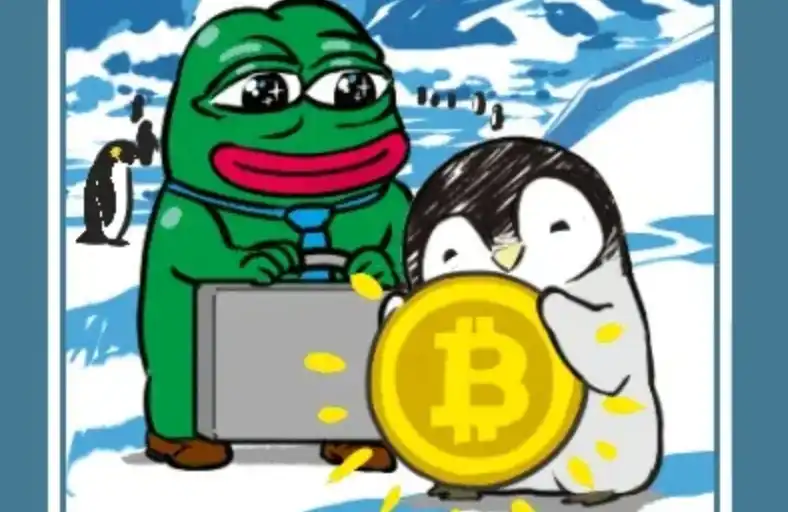Exclusive interview with Astar founder: Akio Morita is my idol, Sony could have made the iPhone
Speaking of Astar Network, I wonder how much impression you still have of this project. In the domestic market, Astar, which was born at the most enthusiastic moment of Polkadot, has gradually lost attention as Polkadot faded out. Compared with new public chains such as Solana and Near, Astar lacks different narratives and gameplay. Coupled with the relative closure of Japanese projects, Astar has not entered the ranks of mainstream public chains.
These issues also appeared in a conversation with Astar founder Sota Watanabe a few years ago. At that time, he had just created Astar and talked about the restrictions of Japan's taxation on cryptocurrencies and the restrictions of the closed Japanese ecosystem on the Japanese industry. After 5 years, Sota has a new understanding of Japan's Web3. The official has made changes in taxation, and Astar has also moved to Europe and the United States. It has just cooperated with Polygon to launch a new ZKEVM. Of course, what he is most looking forward to is the public chain that can cooperate with his idol company Sony. For Astar, for Sota himself, and even for Japan's Web3, the release of Sony Chain will be a milestone.
At the same time, BlockBeats also talked with DFG (Digital Finance Group), one of Astar's investment institutions, and they also expressed their views on regional public chains and the competition of new public chains.
The following is a summary of the conversation with Sota Watanabe, founder of Astar.
The core of Astar
BlockBeats: When did you first trade cryptocurrency?
Sota:I started to get involved in the cryptocurrency field in 2016 when I was a sophomore in college. Before that, I traveled to many countries including China, India, and Russia. During my travels, I witnessed many social problems such as poverty, discrimination, and inequality, especially in the United States.
After that, I started working for a non-profit organization in Japan, Russia, and India. Faced with so many social problems, I realized that although I was able to help specific individuals solve specific problems, without the large-scale application of technology, the impact of these efforts was limited. Therefore, I joined SoftBank Robotics for an internship and began to compare the potential of blockchain and artificial intelligence in depth.
I realized that while artificial intelligence can enhance the power of large companies or countries because it relies on large amounts of data for training, blockchain technology can give ordinary people free financial and data ownership. I saw the huge potential of blockchain. So I joined a blockchain company in San Francisco and returned to Japan in 2018 to become a blockchain researcher at the University of Tokyo.
In 2019, I co-founded Astar Network with other founders. In the blink of an eye, it is already 2024, and Astar Network has become one of the leading protocols in Japan. At present, our team brings together 70 members from 15 to 16 different countries. We have also received funding from Sony, Samsung, and UOB, one of the major banks in Singapore. The next goal is to enter the US market and strive to achieve global success.
BlockBeats: What is your advantage compared to other Japanese Web3 products?
Sota: Astar represents Japan to some extent. I believe that if Astar fails, it will have a great impact on Japan's Web3. At the same time, I can talk to large companies and regulators, which are our advantages.
(BlockBeats Note: We also asked DFG about this issue, wanting to understand the logic behind their investment in Astar. DFG said that at the time, they valued Astar Network’s ability as one of the two Ethereum Virtual Machine (EVM) chains to be launched on Polkadot. DFG had previously admired the Polkadot architecture and EVM compatibility, as well as the capabilities of Sota and his team.
At the same time, DFG also emphasized Astar’s first-mover advantage and Sota’s active participation in the Blockchain Association and Corporate Advisory Committee, further consolidating its position in the industry. In addition, Startale Labs (Astar’s parent company), as an incubator dedicated to educating and guiding developers, and its grassroots participation initiatives in Japan, also bring advantages to Astar.)
Details of Sony Chain
BlockBeats: How is Sony Chain progressing now? You said before that you are very optimistic about Sony Chain, but in fact, chains like China's Tencent and South Korea's LINE, I don't think they have brought mass adoption.
Sota: As a large-scale enterprise, Sony faces many challenges in launching blockchain, especially in terms of law and regulation, but the project is moving forward steadily. I can disclose some information. This is a public chain, not a private chain. We are doing things about Web3, not Web2.
Another important development is that we have been working closely with Sony Network Communications, a subsidiary of Sony, and one of our external directors has come from there, and starting in April, he will lead the Sony Chain project directly at Sony headquarters.
Startale Labs and Sony have decided on the technology to adopt and how to build it, and have already established an internal timeline.
(BlockBeats Note: Here is a brief explanation of the relationship between Astar Network, Sony Chain and Startale Labs. In general, these three products or companies are related to Sota. Sota is the founder of Startale Labs and Astar Network. Startale Labs inherited the technology and knowledge base that Sota gained in the operation of Astar Network. Startale Labs also cooperated with Sony, received funding from Sony, established a joint venture with Sony, and worked closely on the Sony Chain project.)
BlockBeats: It sounds like Sony Chain is a competitor of Astar Network
Sota:I don’t agree with this view. There is a strategic alignment between us and these big companies. One of the core advantages of Startale Labs is the ability to cooperate with these big companies that are often regarded as opponents by the Web3 community. In my opinion, they are potential partners.
BlockBeats: Is the focus of Sony Chain on games?
Sota: From my perspective, this chain will serve all fields and become a universal blockchain. Although Sony may hope that this chain can serve as the basic protocol for its business, covering games, music, movies, banking and even car insurance, in my eyes, the potential of this chain is far more than that.
BlockBeats: Will Sony Chain have its own token?
Sota: We are considering all possibilities.
BlockBeats: Which Japanese company or entrepreneur do you admire most?
Sota:Sony, I really respect Sony and the founder Akio Morita. I have a poster of him on the wall in my office in Singapore.
Japan lost to the United States in 1945, when Japan was nothing, Tokyo was nothing. Then the founder of Toyota, the founder of Panasonic, the founder of Sony began to change Japan, and made Japanese products go from being cheap and poor quality to high-quality brands.
And now, the biggest companies are still Toyota and Sony, and there are no startups. You see Google, Facebook, Amazon in the United States, all of which were born in the past 30 years, but not in Japan, we missed Web 2.
I personally think Sony could have made the iPhone, Sony could have made the App Store, but they missed it. Web 3 is a huge opportunity, not just for governments, but for these big companies, and startups like us. So we are very aligned in our mission, and that's why I think we are very united.
(BlockBeats Note: We also consulted DFG about the competition between the public chains brought by Sony Chain and Astar. We want to know whether the current public chain is completely different from the past. Compared with the traditional chain that attracts users after the chain is built, the new chain is more about starting from its own product to build a new chain, such as the recent TON and Berachain.
DFG said that the landscape of public chains has diversified, providing different settings tailored to specific use cases and target audiences. Take TON as an example, it uses Telegram’s huge user base and rich resources for distribution. In contrast, Berachain has a novel consensus mechanism that can effectively initiate liquidity guidance for its ecosystem. However, it is necessary to recognize the limitations and overhead costs associated with creating and maintaining application-specific blockchains. This approach is not suitable for most dApps. It may be impractical for projects to build on top of existing blockchains, especially for smaller teams that lack the resources and expertise required to make such an attempt. Instead, leveraging the tools, user bases, and other resources provided by established public chains may provide a more viable path forward. The final outcome is not certain. Both ecosystems cater to different needs and preferences within the blockchain community. )
Japan and Web 3
BlockBeats: In your live broadcast two years ago, you said that Japan was lagging behind in Web3, mainly due to taxation and regulation. What do you think about this now?
Sota:Yes, I admit that we still face some challenges and difficulties in the Web3 field. But at the same time, Japan's performance deserves recognition. They launched the Web3 white paper in 2023 and recently released the 2024 version of the white paper. They have obviously recognized the problem and are actively seeking solutions. Especially in terms of corporate taxation, they have made some positive adjustments, which has greatly stimulated the enthusiasm of large companies to participate in Web3 projects.
However, the burden of personal income tax is quite heavy, and we need to reduce it to a tax rate level comparable to securities investment. In the next two years, I hope to promote the solution of personal taxation. At present, the tax environment is already quite favorable for companies and governments, but the tax rate is still too high for individual investors. In contrast, the situation in South Korea is that although companies cannot hold tokens, individual investors have zero taxes on cryptocurrencies.
BlockBeats: You once said that NFT has great potential in Japan. Given the current situation of the NFT market, do you still hold the same view?
Sota:The value of NFT depends on how we define it. If we view NFT as just a symbol or image, or even a use like selling a stone image, it is definitely not a good idea. However, if we view NFT as a practical application such as a royalty program or membership, then it has real future value. Many people may not realize that they are already using NFT technology in their daily lives without realizing it.
BlockBeats: I feel that Japanese Web3 projects are a bit closed to Japan. Do you feel this way?
Sota:Yes, I think the problem lies in the English ability of Japanese people. If they could speak English as fluently as their native language, I believe Japan's GDP could double. At present, our ability and development are largely limited by language communication.
BlockBeats: After the cooperation with Polygon, are there any recent plans?
Sota: We will hold a BaseCamp event next week, where I will introduce Astar 3.0. The development of Astar 3.0 is divided into two phases, and the whole process is expected to take one year. This project is also closely related to Sony. At present, about 60% to 70% of my time is devoted to the work of advancing this project.
Welcome to join the official BlockBeats community:
Telegram Subscription Group: https://t.me/theblockbeats
Telegram Discussion Group: https://t.me/BlockBeats_App
Official Twitter Account: https://twitter.com/BlockBeatsAsia
 Forum
Forum OPRR
OPRR Finance
Finance
 Specials
Specials
 On-chain Eco
On-chain Eco
 Entry
Entry
 Podcasts
Podcasts
 Data
Data

 Summarized by AI
Summarized by AI







